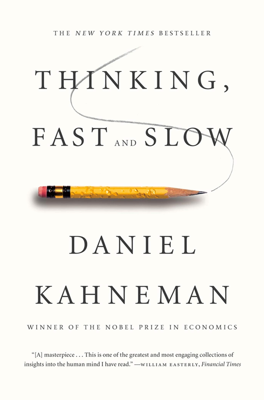Causes Trump Statistics
Causal Versus Statistical Base Rates in Decision-Making
This section explores differences in human reasoning when faced with statistical versus causal information. Kahneman discusses a classic scenario in Bayesian inference involving two cab companies—Green, which dominates 85% of the market, and Blue, which makes up 15%. Despite the witness's testimony at 80% reliability identifying a Blue cab in an accident, Bayesian calculations should lead to a verdict that it’s more probable (41%) for the cab to be Green given the base rates. However, individuals typically focus more on the direct witness testimony, illustrating a common neglect of statistical base rates in lieu of more vivid, personal recollection.
Influence of Causal Stories
Conversely, when the scenario is altered to imply causality (i.e., Green cabs being involved in 85% of accidents), people significantly incorporate this causal base rate into their judgments, reflecting a pronounced reliance on causal reasoning over mere statistical facts. This causal version prompts individuals to form stereotypes (e.g., "Green drivers are reckless"), which significantly influence judgments by providing a simple, causal narrative that satisfies the human inclination for coherent storytelling.
Stereotyping and Its Neutral Role
Kahneman clarifies that stereotyping, in this context, is a neutral mechanism rather than a pejorative term. It refers to the mental representation of categories, which could be both accurate or misleading. While certainly beneficial in improving judgment accuracy in cases like the cab company scenario, stereotyping in sensitive social or moral contexts (like hiring or law enforcement profiling) can be problematic. The societal shift away from stereotyping is beneficial for social justice, although it sometimes comes with the cost of less accurate judgments.
Challenging the Importance of Causal Base Rates
Further experiments demonstrate that not all causal base rate information is treated equally. Kahneman references a study by psychologist Icek Ajzen, which manipulates perceptions about a class exam's difficulty through varying pass rates. Here, causal narratives (e.g., a difficult exam causing low pass rates) are treated as impactful. In contrast, if the base rate is presented as a mere statistical construct (i.e., a constructed sample biased towards failure), it influences judgments less, underscoring System 1's limitation in handling statistical data without a causal story.
Educational Implications and the Power of Personal Cases
Finally, Kahneman discusses the challenges in education, particularly in teaching psychology or statistics. Through experiments by social psychologists Nisbett and Borgida, it’s revealed that students often fail to integrate surprising statistical data into their understanding of human behavior unless it's attached to vivid, individual examples that they can relate to causally. The studies underscore the profound gap in understanding between general statistics and specific, individualized cases. This demonstrates that for effective learning, particularly in altering deeply ingrained beliefs or intuitive thinking patterns, highlighting surprising personal cases may be more instructive than imparting abstract statistical truths.
In summary, the chapter emphasizes the significant impact of causal narratives in shaping human judgment and decision-making, contrasting it with the frequently inadequate handling of pure statistical information. This demonstrates a fundamental aspect of human cognition: the preference for and the persuasive power of stories over raw data, crucial for understanding decision-making processes in numerous real-life contexts.
